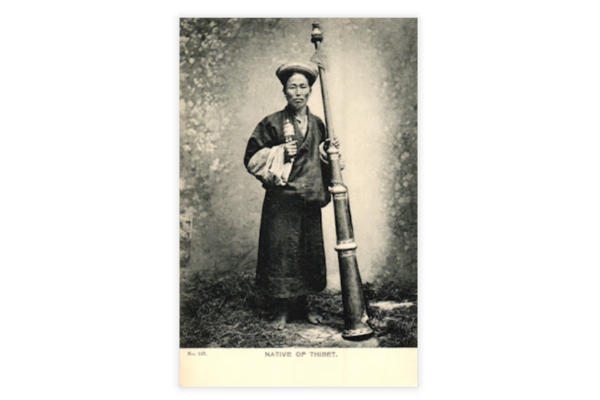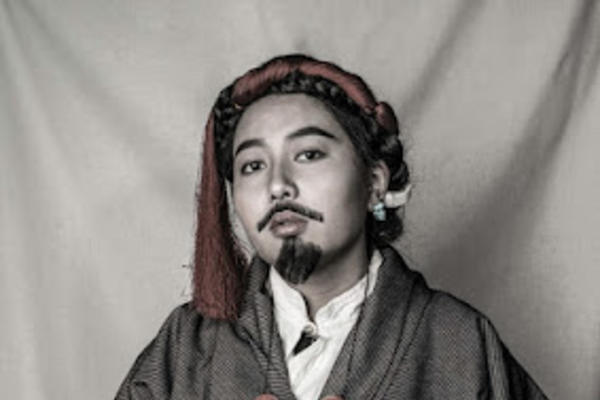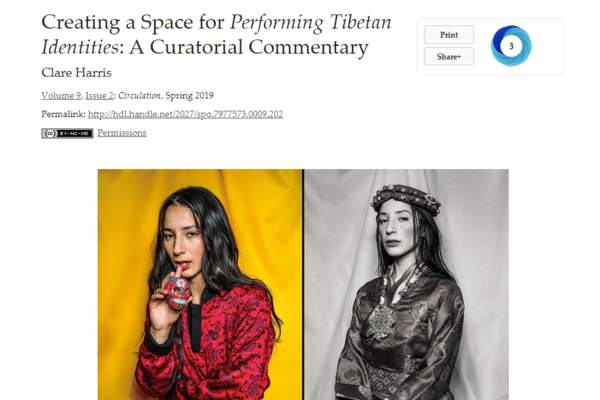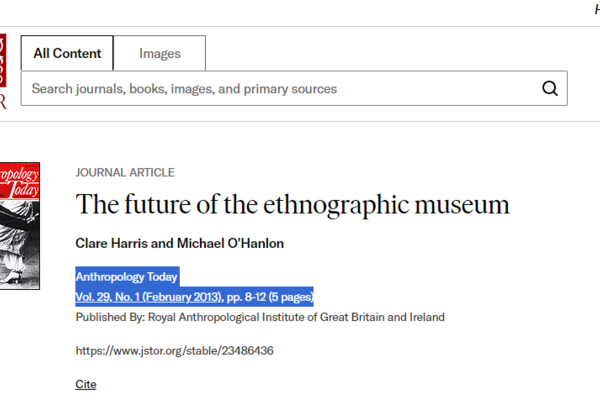Impact Case Study: Activating Art for Tibetan (Self-)Representation and Collaboration in UK Museums
Performing Tibetan Identities: Photographic Portraits by Nyema Droma
About
This exhibition was the result of a collaboration between Nyema Droma and Clare Harris, Curator for Asian Collections at the Pitt Rivers Museum and Professor in the School of Anthropology and Museum Ethnography.
It ran from 13 October 2018 – 30 May 2019.
Performing Tibetan Identities attempted to overturn the conventional balance of curatorial/academic power and assign it to Tibetans by opening up the galleries, collections and practices of the Pitt Rivers Museum. It continued The Pitt Rivers Museum's strong track record of collaboration with ‘source communities’ and its decolonizing agenda.

Nyema Droma is a young Tibetan photographer and curator from Lhasa, in the Tibet Autonomous Region of the People’s Republic of China. She developed her practice as a photographer at the London College of Fashion and has worked in both the UK and China. During 2018, she was ‘visiting artist’ at the Pitt Rivers Museum. This was her first exhibition in a major museum.
For Performing Tibetan Identities, Nyema photographed other young Tibetans, whether living in Europe as members of the Tibetan diaspora, or in Tibetan-speaking areas of China. Her pictures document the many things they share as global citizens and consumers of popular culture, as well as the particularities of their Tibetan heritage. By producing double portraits of each person, in daily wear and ‘traditional’ clothing, Nyema alludes to the fluidity of identity formation and how it may be expressed in dress and objects, revealing the range of options for self-fashioning that are available to contemporary Tibetans.
For more than 20 years, academic and curator Clare Harris has pioneered new ways of representing Tibetan culture. Her publications, exhibitions, online platforms are rich in collaborations with Tibetan researchers and artists from China, India and the global Tibetan diaspora. Her work has fostered new modes of understanding, increased well-being among a group of refugees. It has given unprecedented opportunities to Tibetans to reflect on their identity outside traditional community settings. Harris has specifically engaged with Tibetans in the UK to co-curate exhibitions, workshops and public events that challenge long-established and resilient stereotypes about Tibet. Her work has also directly influenced curatorial practice concerning Tibet at major museums.
‘Performing Tibetan Identities: Photographic Portraits by Nyema Droma’ (interviews with participants)
The Impact
This project has shaped understanding amongst museum audiences about Tibetan identity and enabled Tibetans themselves to change the narrative about Tibet at a critical juncture in its history.
The opportunity to explore their own identity further was particularly powerful for young audiences. One visitor reported after the exhibition:
‘I want to learn Tibetan from my dad and wear my chuba [Tibetan coat] more often and get in touch with my Tibetan family’
The show was supplemented by a series of public engagement with research activities. The project directly reached one fifth of Tibetans in the UK, with 200 Tibetans attending events in the museum in-person.
A young Tibetan man in one of the workshops for adults said:
‘…what I felt really special about all the exhibition is like, this exhibition shows profound Tibetan perspective, or Tibetan narrative on issues. It’s in the forefront… it challenges the stereotyping of being Tibetan’
The exhibition also benefited non-Tibetan audiences. Of those surveyed, 66% of visitors agreed that it had changed their perception of Tibetans. In empathising with Tibetan refugees, similar numbers were inspired to reflect on their own sense of identity and highlighted their mixed heritage or migration stories. The exhibition was described by visitors as having “broken all boundaries” and made people “think deeply about prejudice and stereotypes in general”. For 62% of visitors, the exhibition also changed their experience of the Pitt Rivers by inserting contemporary perspectives from new and different voices, making “the whole museum feel less like a house full of colonial plunder”
Harris’ research – through the Performing Tibetan Identities project – has demonstrated how researchers and curators can better engage with Tibetans, as creators of artworks and co-curators of exhibitions, to reach out to a ‘minority amongst minorities’. An unprecedented project of its kind, on an institutional level the exhibition has helped other major museums to begin to address the limitations and absences in their thinking and practices around Tibet. It has also highlighted the importance of collaboration with Tibetan community members, in which they are active participants in the process of rethinking the representation of Tibet. The result is a recognition by the Tibetan community in the UK of how this project enabled them to meaningfully reflect on their identity and culture and to shape how others perceive them in their own terms.






